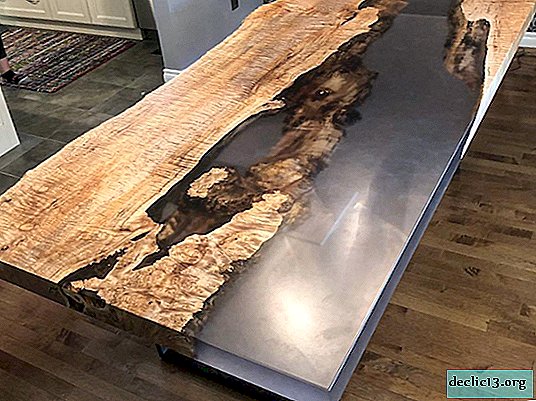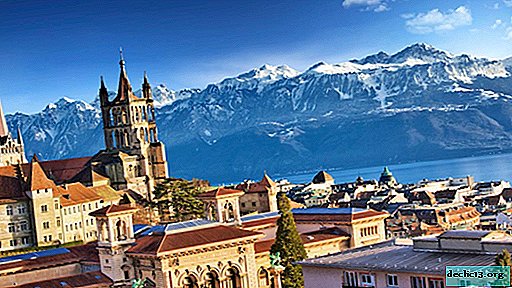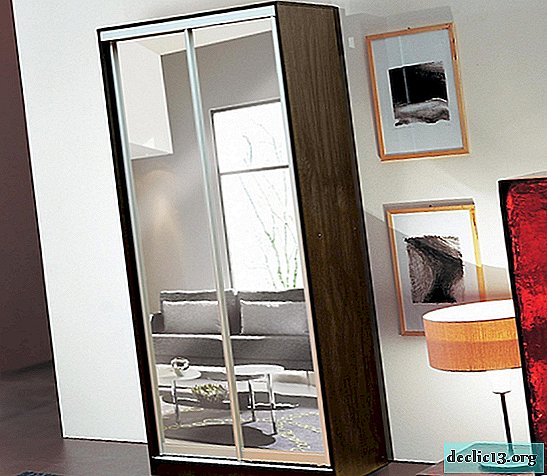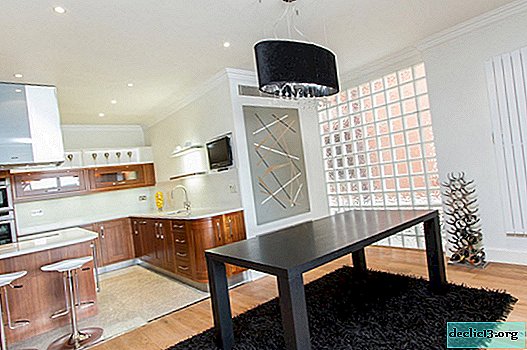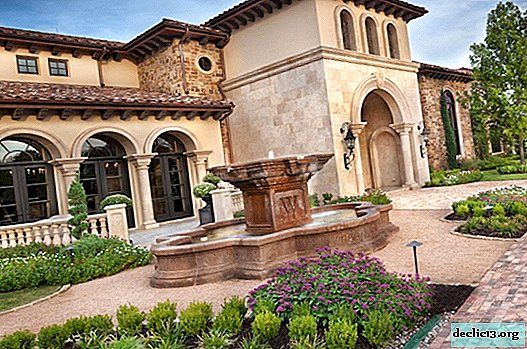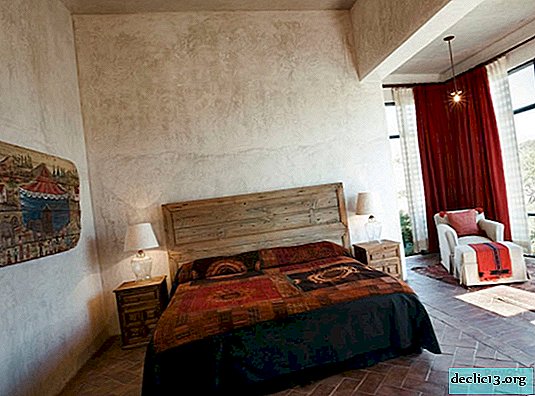St. Vitus Cathedral - an architectural masterpiece in the Gothic style
St. Vitus Cathedral is an iconic landmark of Prague, pride and a national monument of the Czech Republic. It dominates in the middle of the third courtyard of Prague Castle, and thanks to its almost 100-meter height, it is perfectly visible even from the opposite bank of the Vltava River.
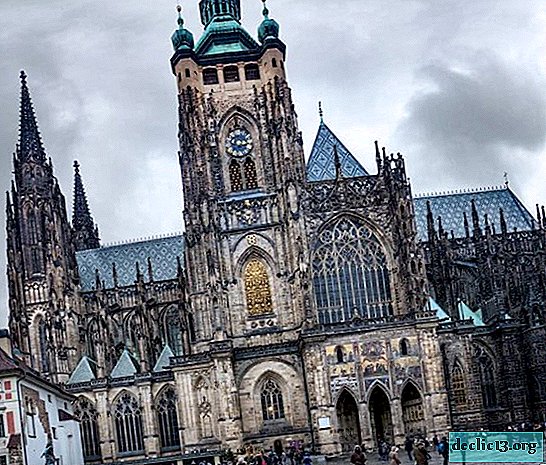
"The Cathedral of St. Vitus, Wenceslas and Wojtech" - that is the official name of the world famous Prague landmark. For centuries, christenings, coronations, weddings of the kings of the Czech Republic were held here, the mausoleum of the kings of Bohemia and the archbishops of Prague is also located here.
History reference
The history of St. Vitus Cathedral in Prague has very ancient roots, perhaps it began even earlier than the construction of this building.
Before at the end of the 9th century the ruling princes of the land began to forcibly impose Christianity, there was the temple of Svyatovit in this place. The saint was a pagan deity of war, and was revered by the local population as the supreme god.

Since Christianity took root very poorly, in the first years of the X century, Prince Wenceslas went to the trick: where he used to have the temple of Svyatovit, he built the rotunda of St. Vitus. The logic of such actions was as follows: they worshiped Svyatovit - they will begin to pray to St. Vitus.
Reference! Vit (290-303) is a young man whose life has not preserved reliable information. According to an old legend, being in Rome, Vit expelled demons from one of the noble citizens. When Vit did not want to pray to the Roman gods, he was executed.
Prince Wenceslas, who was killed in 935, was buried in the rotunda of St. Vitus. Within a couple of years, he was canonized and became the first saint deeply revered in the Czech Republic. The rotunda (13 m in diameter), as the place where St. Wenceslas was buried, was remade and completed in the basilica in 1060-1096. In addition to the already mentioned St. Vitus and Wenceslas, a new shrine was also dedicated to St. Wojtech.
Reference! Vojtech (955-997) - the second bishop of Prague, who was respected in the Czech Republic, Poland, Hungary and Germany for his zealous service to the Church.
 Charles IV of Luxembourg
Charles IV of LuxembourgKing Charles IV of Luxembourg decided to erect a new grandiose religious building on the site of the former rotunda, dreaming of turning Prague into the best European city. By the way, the ruins of the walls and foundations of the rotunda have survived to the present.
The construction of St. Vitus Cathedral was not easy and lasted for 6 centuries: it began in the middle of the 14th century, and was completed only in the middle of the 20th century. During this time, there were many events: the Hussite wars that prevented the construction, the fire that destroyed part of the building, the robbery and devastation The uprising of the estates, artillery shelling during the war for the Austrian inheritance and even a lightning bolt that destroyed the dome of the bell tower. There are many articles on the Internet that tell about the history of the construction of a religious shrine, and now we just call the architects, thanks to whom it exists:

- Flemish Mathieu of Aras - managed to create a project and in 1344 lay the foundation of the cathedral in the place where the rotunda was;
- Peter Parlezhr from Swabia - at the age of 23 he led the construction work;
- The sons of Peter Parlezh - Jan, Peter and Vaclav Parlezhr - continued the work of his father;
- Master Petrilk completed the bell tower and the Golden Gate;
- Benedict Reith worked from 1566 to 1561;
- Wortslav Pesina and Joseph Kranner developed a plan to complete the construction and renovated the existing parts of the building (from 1844 to 1866):
- Joseph Motzker was engaged in reconstruction in the years 1873-1899;
- Camille Hilbert is the last architect to complete the construction of St. Vitus Cathedral in 1929.
Architecture and Exterior
It will be possible to evaluate the scale of the structure only from afar. The square is very densely built up, which makes it impossible to capture the whole view and get a full photo of St. Vitus Cathedral in Prague. The dimensions of the building, of course, are striking: the length is 124 m, and the towers have a height of 82 to 96.5 m.

Advice! If this is your first trip to the St. Vitus Cathedral, be sure to approach it from the main entrance to Prague Castle. The building appears before the eye quite unexpectedly, amazing with its grandeur and power!
Do not rush to go inside, the structure needs to be walked around. The picturesque facades look like stone lace, in which twigs, leaves, flowers intertwined. And the expressive figures of chimeras and gargoyles decorating the gutters are the guards that scare away evil spirits.
Western facade
Now you can go inside the Prague St. Vitus Cathedral through one of the three entrances that are arranged on the western facade. The doors of the main entrance are made of bronze and covered with relief images on the construction of this religious building, and events from the life of Prince Wenceslas and St. Wojtech are displayed on the side gates.
Above the central portal there is a very beautiful stained-glass rose window (diameter 10 m), demonstrating stories about the creation of the world.
On two sides of the stained-glass window, above the side entrances, majestic twin towers rush up 82 m.
South facade and Golden GateOn the south side, the main front portal is equipped, which is used by priests of the highest rank only in especially solemn occasions - the Golden Gate. The gate is so named because of the unique mosaic above the arches, made of pieces of gold-plated glass and multi-colored smalt. To create such a creation, Venetian craftsmen produced more than 1,000,000 small mosaic tiles in 33 color shades.
 Golden Gate
Golden GateIn the center of the mosaic picture is Jesus Christ, performing the Last Judgment, and the intercessors of Czech land crying out for mercy. On the right side of the picture are saved believers, and on the left are the atheists sent to hell.
One cannot but mention the original fence in front of the Golden Gate of St. Vitus Cathedral in Prague Castle. On the grid, you can see 12 stylized architectural compositions showing various crafts for all the signs of the zodiac. The plot is really unique, because the Church has always been against astrology.
 South bell tower
South bell towerFrom the south facade of the cathedral is the South Bell Tower. Crowned with a tower reaching a height of 97 m, a radiant Czech lion on a spire 3 m high.
At the height of the second tier, hidden by elegant gilded bars, there are bells. Cast in the sixteenth century, the Sigmund (Sigismund) is the largest and heaviest bell in the Czech Republic, its height is 2 m and its weight is between 14 - 16 tons. The Sigmund rings only on the biggest holidays and in very exceptional cases. (for example, when the Pope arrived in Prague). Other ancient and significant bells: "Wenceslas" (4500 kg) and "John the Baptist" (3500 kg).
Advice! Embark on a guided tour on Sunday, at 9:45 a.m. or at 11:59 a.m. when the bells ring over Prague Castle. The alarm sound is literally mesmerizing and makes you freeze with delight.
Even higher are the amazing watches of 1597. This watch has 2 dials, which are located one above the other: you need to watch the clock on the top, and the minute on the bottom.
At the southern bell tower, at a level of 56 m, there is a viewing platform. A very narrow and long spiral staircase leads to the site, with about 300 steps (according to tourist estimates from 287 to 298). The site offers stunning panoramic views of Prague with its red-tiled houses.
The space inside the cathedralAdvice! To visit the St. Vitus Cathedral in the Czech Republic, try to choose a good good day, because in bad weather no one is allowed on the tower.
The grandeur of St. Vitus Cathedral in Prague is fully comprehended by being inside.

The room is huge, it has the shape of a Latin cross 124 x 60 m. A beautiful arched arch is supported by 28 powerful columns 33 m high. These columns separate 17 chapels from the main space - small prayer rooms. Along all the external walls of the building, at a height of 14 m, a triforium is arranged - a gallery with busts of monarchs, archbishops and architects creating this building. There is also an organ on the premises, which, although it is considered the best in Europe, sounds only on large church holidays.
Separately, it should be said about the colorful stained-glass windows, most of which were created at the beginning of the twentieth century by the best Czech artists (including the famous Alphonse Mucha). It was believed that since a religious building is a holy place, the light there should be special. Therefore, stained glass windows were installed: the sun's rays coming through them were refracted, dividing the surrounding world and the Holy world.
The main altar and mausoleum of Czech kingsAdvice! A huge stone building is always cold, even when the hottest summer days are outside. Going on an excursion, take care not to freeze.
 The main altar and mausoleum of Czech kings
The main altar and mausoleum of Czech kingsThe main altar, made in the XIX century according to the project of the masters Kranner and Moker, is installed in the eastern part of the building. The altar is based on a throne decorated with small sculptural portraits of the Old Testament prophets.
In front of the altar, behind the Renaissance grate, is a white-marble sarcophagus (1589, sculptor Molin), on the lid of which relief portraits of Maximilian II, Ferdinand I and Anna Jagellonskaya are carved. This is only part of the tomb, most of the crypts are in the dungeon, in the crypt.
Down to the crypt are steps that are next to the chapel of the Holy Cross. There are 16 burials in the crypt, among other famous people here lie Charles IV and his wives, Vaclav IV and Rudolph II. The surviving ruins of the Romanesque rotunda of St. Vitus in Prague are also located here in the crypt.
Chapel of St. Wenceslas
Over the crypt, where a rotunda with the tomb of St. Wenceslas stood from the 10th century, they built a chapel. It is not for nothing called the concentration of the best masterpieces of Gothic art. The walls of the sanctuary are painted with very beautiful frescoes depicting scenes from the Bible and decorated with gold. The luster of 1345 gems (agate, carnelian, amethyst, jasper, chalcedony), of which mosaics are laid on the walls, serves as a symbol of heavenly Jerusalem.
At the right wall of the chapel is the tomb of St. Wenceslas, and in the center is his statue in battle armor.
Tombstone of Jan Nepomuk
The sarcophagus of St. John of Nepomuk is located next to the altar, but it is perfectly visible from the entrance. This unique monument at the beginning of the 18th century was created by the famous Fischer von Erlach from Vienna. For his creation, which became a real masterpiece of baroque art, the master used 2 tons of pure silver.
Opposite the tombstone, the chapel of St. John of Nepomuk is arranged.
Compare accommodation prices using this form
Practical information
St. Vitus Church is located at: III. Nadvori 48/2, Pražský hrad 119 01 Praha 1, Czech Republic.
Working hours View from the observation deck
View from the observation deckIn the summer tourist season (from April 1 to October 31):
- Monday-Saturday (inclusive) - from 9:00 to 17:00;
- Sunday from 12:00 to 17:00.
In the winter season (from November 1 to March 31):
- Monday-Saturday (inclusive) - from 9:00 to 16:00;
- Sunday from 12:00 to 16:00.
Please note that the last call is possible 20 minutes before closing.
Advice! Try to visit this attraction of Prague until the 12th day, when there are not so many tourists.
The shrine is closed to visitors during religious services that begin at such times:
- Monday to Thursday (inclusive) and Saturday - at 7:00;
- on Friday - at 7:00 and 18:00;
- on Sunday - at 8:30 and 10:00.
Changes in the work schedule and the time of services during the holidays can be found on the official website of the cathedral: //www.katedralasvatehovita.cz/en.
Cost of visiting
On a small space, which is located at the very entrance from the western side of the temple, you can go for free and look at its interior. To be able to really consider everything that is interesting (and everything is interesting without exception) inside St. Vitus Cathedral, you have to buy a ticket. But it is impossible to purchase tickets only to the St. Vitus Cathedral, as tourists have sightseeing routes around Prague Castle. It remains only to choose an excursion, based on the fact that you still want to see it on the territory.
There are 2 excursions and, accordingly, 2 types of tickets. In the table, their cost is indicated in Czech crowns.
| Prague Castle - route A | Prague Castle - route B | |
|---|---|---|
| for adults | 350 | 250 |
| for schoolchildren and students from 6 to 26 years old, as well as for people over 65 years old | 175 | 125 |
| family ticket (1-5 children under 16 years old and 1-2 adults) | 700 | 500 |
| children under 6 years old | is free | is free |
To climb to the observation deck of the South Tower you need to buy a separate ticket for 150 crowns for tourists of any age.

Tickets are sold at Prague Castle information centers, which are located in the 2nd and 3rd courtyards. Centers are open daily at such times:
- in the summer season from 9:00 to 17:00;
- in the winter season from 9:00 to 16:00.
Tickets are valid for 2 days (the day of purchase and the next), are not refundable.
Advice! If this is your first time in Prague, in St. Vitus Cathedral, be sure to buy an audio guide (available in Russian). Recording lasts about 3 hours, and you can independently choose a topic on which you want to learn more. Price - 350 CZK for 3 hours and 450 - per day.
The prices and schedule on the page are for May 2019.Find out RATES or book any accommodation using this form
How to behave to tourists
Since the temple is active, certain rules must be observed on its territory.

- Taking photos in St. Vitus Cathedral is allowed, but only without a flash and a tripod.
- For men, the best option for clothes would be classic trousers and a shirt with long sleeves. For women - a dress or skirt covering the knees, a blouse with long sleeves. Women are required to be in the smut, and men must remove them.
- In the temple it is forbidden to speak loudly, touch equipment, sit on the floor, smoke, talk on the phone, eat or drink.
- Tourists must adhere to the tour route, so as not to create traffic jams and not block the entrance / exit to the building.
If you adhere to these recommendations, an excursion to St. Vitus Cathedral will be not only interesting, but also comfortable.
Walking around Prague with a visit to St. Vitus Cathedral:

